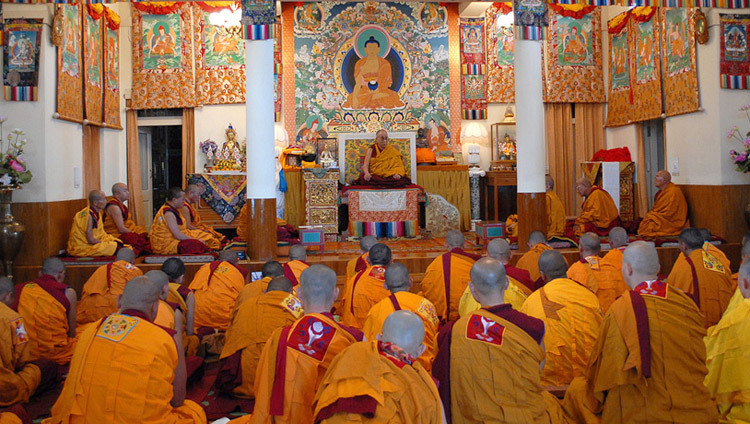What is Tibetan Buddhism?
Buddhism emerged as a significant force in Tibet during the latter part of the 8th century CE. The religion received active encouragement from Trisong Detsen, in whose reign (c. 755–797) the first Buddhist monastery in Tibet was built at Samye, the first seven monks were ordained, and the celebrated Tantric master Padmasambhava was invited to come from India.
Tibetan Buddhism encompasses the doctrines of Mahayana Buddhism, incorporating Tantric and Shamanic rituals. Additionally, it bears traces of influence from Bon, the ancient indigenous religion of Tibet.
While Tibetan Buddhism is often perceived as synonymous with Vajrayana Buddhism, they are not entirely identical. Vajrayana is one of the teachings embraced within Tibetan Buddhism, coexisting alongside the Theravada and Mahayana schools.
Distinction of Tibetan Buddhism from other Buddhists schools
- The status of the teacher or “Lama”
- Preoccupation with the relationship between life and death
- The important role of rituals and initiations
- Rich visual symbolism
- Elements inherited from earlier Tibetan faiths
- Mantras and meditation practices
Supernatural entities hold prominent positions within Tibetan Buddhism. The presence of Buddhas and bodhisattvas is abundant, while gods and spirits inherited from earlier Tibetan religions, such as Bon, continue to play significant roles within Tibetan Buddhism.
Bodhisattvas are depicted as both benevolent godlike figures and wrathful deities.
This metaphysical backdrop has fostered the development of a robust artistic tradition within Tibetan Buddhism. Paintings and other visual mediums serve as tools for comprehension, catering to all levels of society.
The utilization of visual aids for understanding is widespread in Tibetan Buddhism. Images, various architectural structures, public prayer wheels, and flags serve as constant reminders of the spiritual realm within the physical world.
4 main schools of Tibetan Buddhism
The four schools of Tibetan Buddhism are Nyingma, Kagyu, Sakya, and Gelug.
Nyingma, founded in the 8th century, holds the distinction of being the oldest school of Tibetan Buddhism. Unlike the other schools, Nyingma never sought political power in Tibet. What sets the Nyingma school apart is that its teachers maintain their own collections of sacred scriptures and hidden treasures, propagating what they deem as authentic spiritual teachings discovered through “termas.”
Sakya, established in 1073, finds its core teachings and practices in Lamdre (lam ‘bras), known as the Path and Its Fruit. This path guides practitioners toward a comprehensive understanding and realization of the Hevajra Tantra.
Gelug, the newest among the four major schools of Tibetan Buddhism, was founded by Je Tsongkhapa in 1409. His Holiness the Dalai Lama belongs to this school of Tibetan Buddhism.
What is Kagyu school of Tibetan Buddhism?
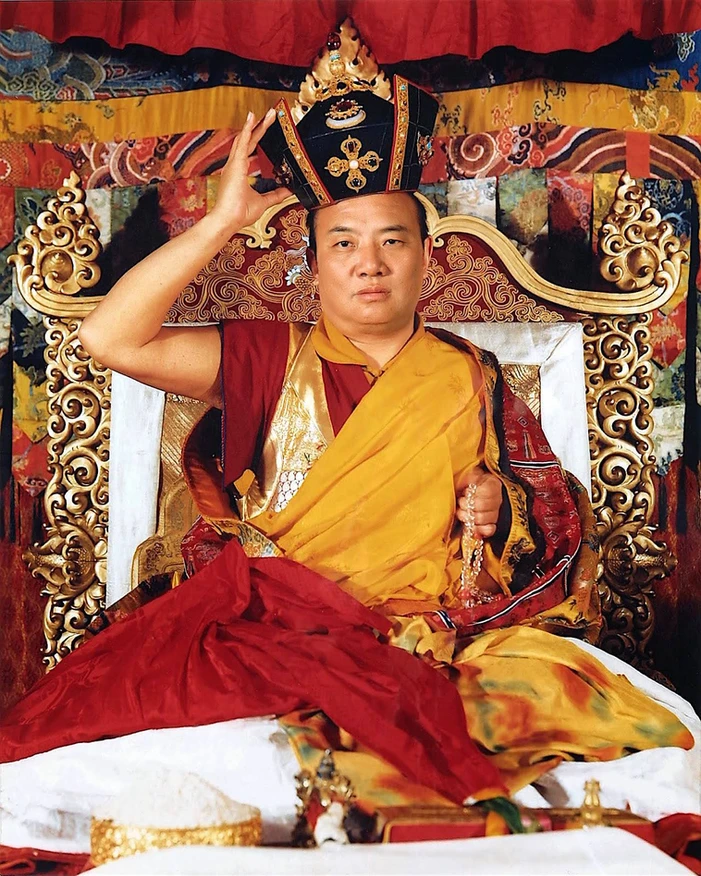
The term “Kagyu” translates to “teaching lineage,” and its followers assert that its doctrines and practices are transmitted through a lineage of awakened teachers.
Kagyu, which was founded in the early 11th century, has gained renown for its focus on meditation and yogic practices, specifically the Six Doctrines of Naropa and the doctrine of mahamudra.
Marpa, Milarepa, and Gampopa are regarded as the founding figures of the Kagyu school of Buddhism in Tibet.
The Kagyu School holds a special significance in the transmission of teachings from teacher to disciple.
Main branches of Karma Lineage:
- Karma Kagyu
- Dagpo Kagyu
- Drikung Kagyu
- Drukpa Lineage
- Taklung Kagyu
- Shangpa Kagyu
What is Karma Kagyu?
The Karma Kagyu school stands as the most widely embraced tradition within the Kagyu lineage.
Guided by the successive incarnations of the Gyalwang Karmapa, who have held the title of the “King of Victorious Ones” since the twelfth century, the Karma Kagyu lineage has witnessed an unbroken succession of accomplished scholars and Mahasiddhas. These dedicated individuals have devoted their lives to realizing the truth of experience and cultivating boundless compassion for all sentient beings. Their contributions have left an indelible mark on the lineage’s spiritual legacy.
THE NAME KARMAPA REFERS LITERALLY TO ‘THE ONE WHO PERFORMS THE ACTIVITY OF A BUDDHA.’
The great early teachers of the Kagyu lineage include the Indian Mahasiddha Tilopa (988-1069), his student Naropa (1016-1100), Marpa Chökyi Lodrö the Translator (1012-1097), the great Tibetan yogi, Milarepa (1052-1135), and the renowned Gampopa (1079-1153). Dusum Khyenpa, the first Karmapa (1110-1193), whose coming had been foretold by the Buddha, was a student of Gampopa and was recognized by him as a manifestation of Chenrezig, the Bodhisattva of Compassion.
Monasteries of Kagyu Lineage
Tsurphu Monastery, Tibet
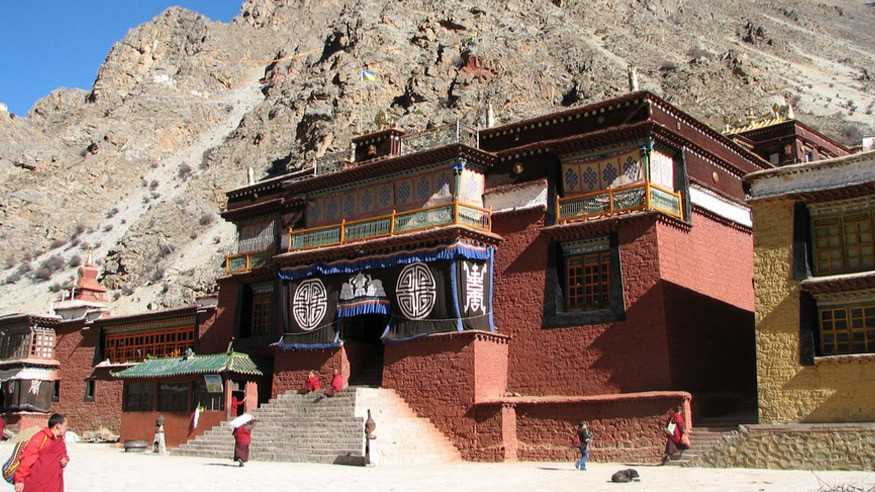
Located approximately 65 km west of Lhasa, Tsurphu Monastery serves as the spiritual center for the Karma Kagyu branch of the Kagyu school in Tibetan Buddhism. Founded in 1187 by Dusum Khyenpa, the monastery emerged some 40 years after he established the Karmapa order in his birthplace, Kham. Tsurphu Monastery became the third monastery associated with the Karmapa lineage and, following the passing of the first Karmapa, it assumed the role of the primary monastery for the order.
Drigung Til Monastery, Tibet
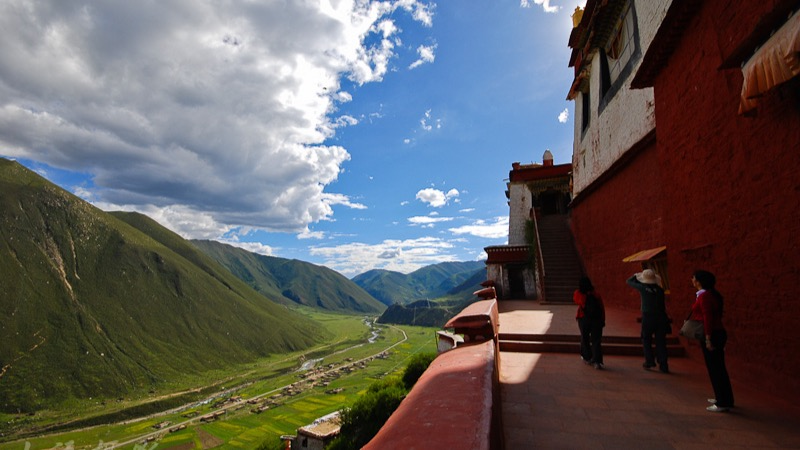
Drigung Til Monastery is an awe-inspiring monastery that seems to defy gravity, clinging to a steep cliff face. It serves as the headquarters of the Drigung sub-order within the Kagyu sect and has a history dating back to the 12th century. In its heyday, the monastery was home to over 500 monks, fostering a vibrant spiritual community.
Adjacent to the monastery, around 600 meters away, lies the sky burial site. To reach it, a path begins just below the monastery and ascends uphill. The site itself is a spacious fenced-off area, adorned with prayer flags, creating a sacred atmosphere. The sky burial practice, an ancient Tibetan funerary ritual, takes place within this designated space.
Rumtek Monastery in Sikkim, India
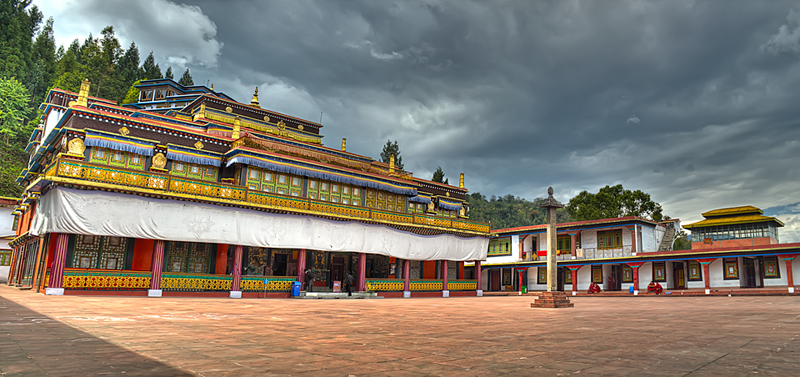
Located approximately 23 kilometers from Gangtok, Rumtek is a serene retreat nestled in the hills overlooking the city. It is home to the renowned Rumtek Monastery, which serves as the principal seat of the Karmapa in the Kargyu school of Tibetan Buddhism. As the largest monastery in Sikkim, Rumtek showcases the finest examples of Tibetan architecture and closely resembles the original Tsurpu Monastery in Tibet.
Within the monastery, one can find a remarkable collection of rare Buddhist religious art objects, making it a treasure trove of cultural and spiritual significance. Additionally, Rumtek Monastery has gained worldwide recognition as a prominent center for Kargyu teachings, attracting followers and practitioners from various parts of the globe.
Kagyu school is also known as the “Lineage of the Four Commissioners”, the “Oral Lineage”, and Whispered Transmission school
Kagyu Spiritual Practices
Kagyu practitioners typically commence their spiritual journey by engaging in the outer and inner preliminary practices, known as ngöndro in Tibetan. These practices serve as a foundation for redirecting the mind away from worldly concerns and towards the pursuit of liberation from suffering and ultimate enlightenment. The outer preliminary practices primarily consist of contemplative exercises, notably the “four thoughts that change the mind”: recognizing the preciousness of human life, contemplating death and impermanence, understanding the suffering of samsara, and reflecting on the principle of karma.
Building upon the outer practices, the inner preliminary practices deepen the student’s commitment to the spiritual path. They involve strengthening motivation, removing obstacles, cultivating favorable conditions for practice, and receiving blessings from the lineage. These inner practices encompass 1) taking refuge, engaging in prostrations, and developing bodhichitta, 2) Vajrasattva practice, 3) offering mandalas, and 4) guru yoga. These practices are sometimes referred to as the “4 x 100,000” due to the repetition required in certain aspects of the practice.
After completing the preliminary practices, students often progress to sadhana practices. These practices employ visualization, mantra recitation, and other techniques to transform ordinary, impure perceptions into a refined, enlightened view of reality.
The fruition practices within the Kagyu tradition can be classified into two categories. The first set, known as the path of skillful means, involves the utilization of subtle energies within the body. This is accomplished through the Six Yogas of Naropa. The second form of practice is referred to as the path of liberation, which encompasses the teachings of Mahamudra. In Mahamudra, students are introduced to and become acquainted with the nature of mind.
Proficient teachers of Kagyu School Naropa

Naropa (1016-1100) was a former professor of Buddhist philosophy. Tilopa used very strong methods to break Naropa’s reliance on concepts, and eventually Naropa realized the inner meaning of the teachings. He systematized Tilopa’s meditations into the famous Six Yogas of Naropa.
Marpa the Translator
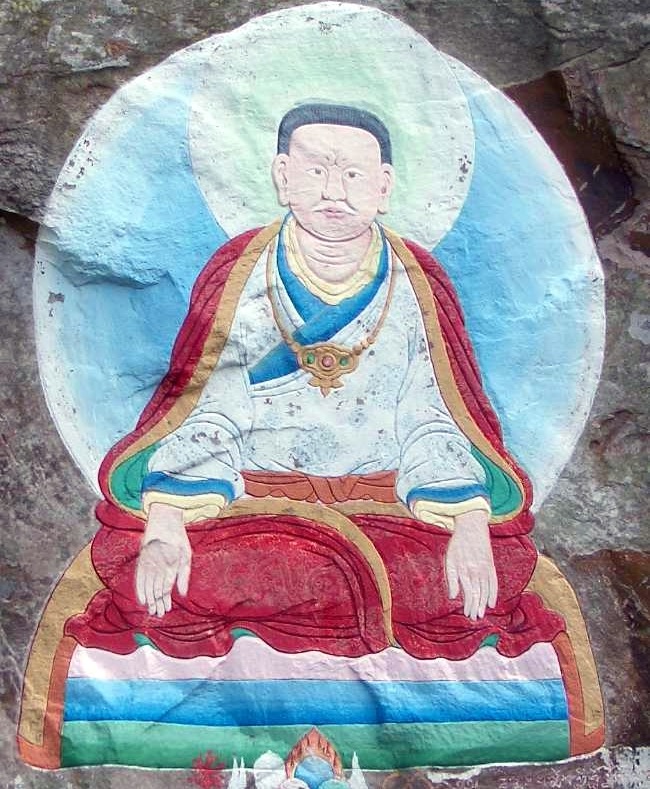
Marpa the Translator (1012-1097) was a remarkable individual who, despite being a layman with family and business responsibilities, achieved full realization as a Buddhist master. He embarked on the arduous and perilous journey from Tibet to India on foot, traversing the formidable Himalayas not once but three times. Marpa played a pivotal role in uniting the teachings of Mahamudra, received from the master Maitripa, with the profound meditations on inner energies known as the Six Yogas, inherited from Naropa.
Marpa’s contributions extended beyond personal realization. He diligently brought back numerous significant teachings from India and diligently translated them into Tibetan, thereby enriching the spiritual landscape. As the first Tibetan master within this lineage, Marpa holds the distinction of being the founder of the Kagyu school.
Milarepa
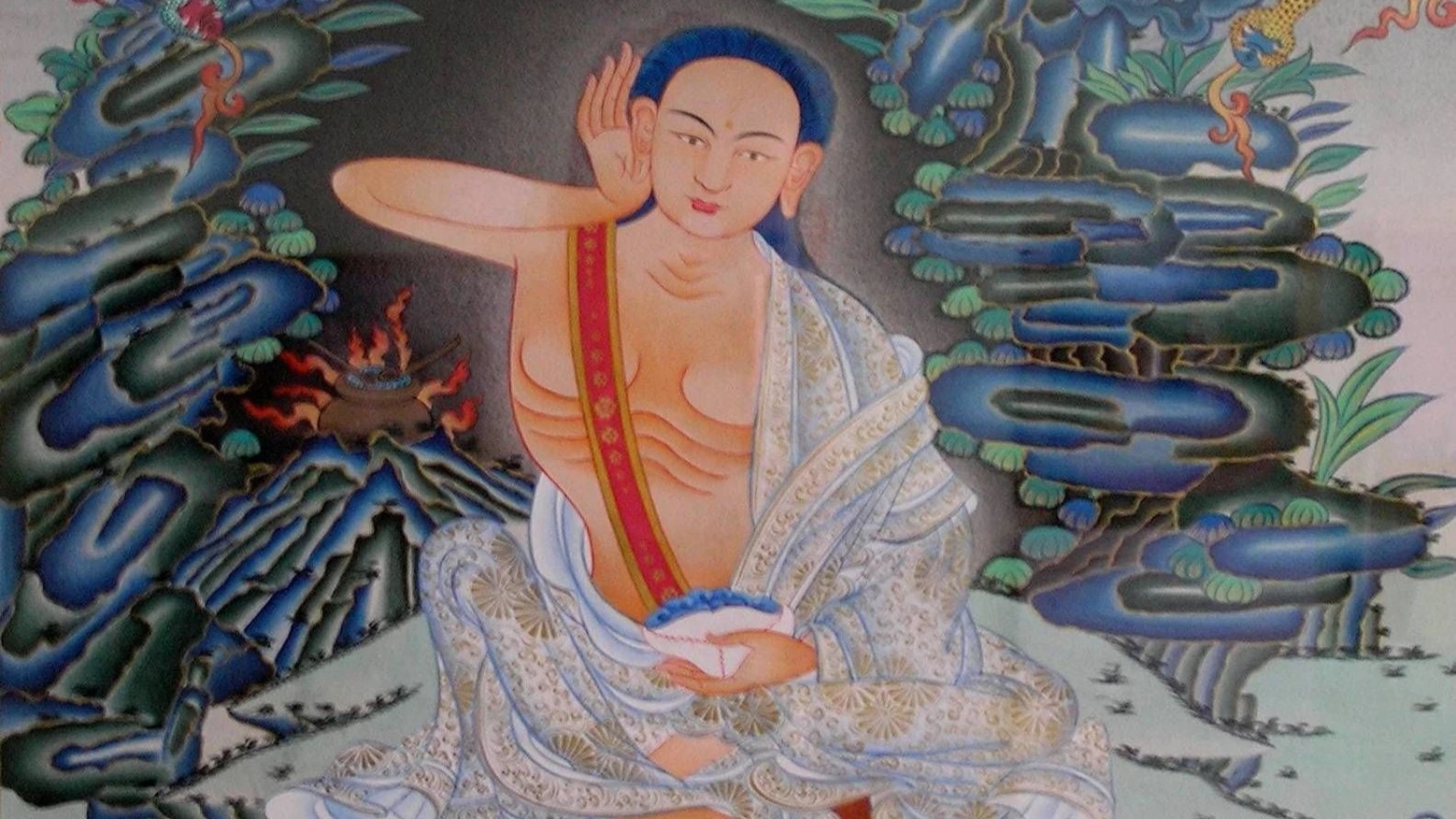
Milarepa, an influential figure in Tibetan Buddhism, was a renowned yogi and poet who lived in the 11th century. As one of the greatest masters of the Kagyu lineage, his life embodies the transformative power of spiritual practice.
Born into wealth, Milarepa experienced tragedy and loss. Seeking revenge, he delved into black magic but soon realized its destructive nature. This realization led him to seek spiritual liberation.
Under the guidance of his teacher, Marpa the Translator, Milarepa devoted himself to rigorous meditation and asceticism. Enduring hardships and solitude, he underwent a profound inner transformation. Eventually, he attained enlightenment and became a poet of exceptional depth.
Milarepa’s teachings emphasize inner cultivation, the impermanence of attachments, and the inherent potential for enlightenment in all beings. His heartfelt songs and poems continue to inspire practitioners on the path of liberation. His life stands as a testament to the transformative power of spiritual practice and the limitless potential for awakening.
Gampopa
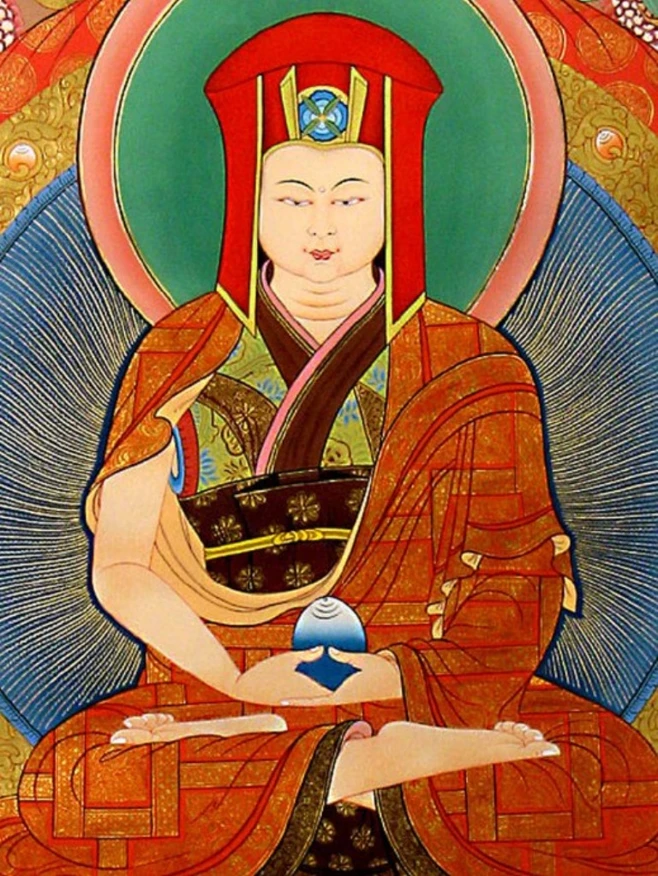
Gampopa, the most renowned student of Milarepa, was known as the “doctor from Dhagpo.” After losing his wife to illness, she made him promise not to remarry, leading Gampopa to become a monk. Under Milarepa’s guidance, Gampopa underwent rigorous training, achieved realization, and became a revered master, attracting around 50,000 students.
Four of Gampopa’s disciples went on to establish the four major branches of the Kagyu lineage: Barom Kagyu, Karma Kagyu, Phagdru Kagyu, and Tshalpa Kagyu.
Among Gampopa’s significant disciples, Dusum Khyenpa, the 1st Karmapa, held great importance. He founded Tsurphu Monastery in central Tibet and became the head of the Karma Kagyu lineage, also known as Karma Kamtsang. The successive incarnations of the Karmapa have upheld this lineage, giving rise to a continuous line of enlightened saints and learned scholars. It is the oldest recognized lineage of reincarnate lamas in Tibet.
Rechungpa
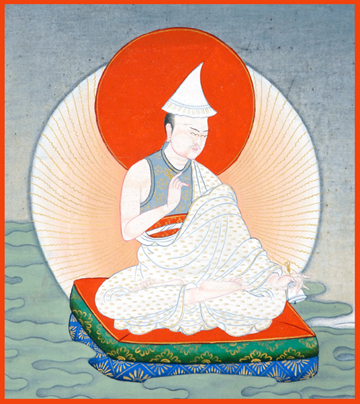
Rechungpa, another student of Milarepa, played a significant role in the Karma Kagyu lineage by transmitting several important teachings. Alongside Gampopa, Rechungpa also served as a teacher to Dusum Khyenpa (1110-1193), who would become the next holder of the Kagyu lineage.
Before his passing, Dusum Khyenpa made a declaration to his students, stating, “To preserve and disseminate these teachings, I will reincarnate.” As prophesied, the 2nd Karmapa soon manifested in the world, asserting at a tender age that he was indeed the Karmapa.
Niguma
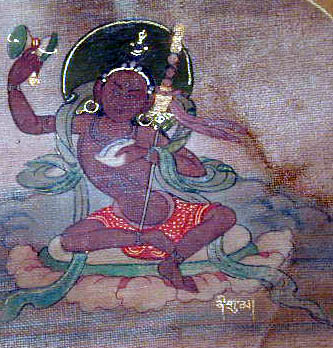
Niguma, an eminent figure in the 10th or 11th century in India, holds a significant place as a yogini and Vajrayana teacher. Regarded as one of the most important and influential figures of her time, she played a pivotal role in the development of the Shangpa Kagyu school of Vajrayana Buddhism. Alongside the dakini Sukhasiddhi, Niguma stands as one of the two female founders of this school, leaving a lasting impact on the lineage.
As a dakini, she embodied wisdom and profound spiritual realization, making her teachings highly revered and influential in the Vajrayana tradition.
Recommend Reading List:
Luminous Clarity By: Karma Chagme & Khenchen Thrangu → buy it here
The Third Karmapa’s Mahamudra Prayer By: Rosemarie Fuchs & The Third Karmapa & XII Khentin Tai Situpa Rinpoche → buy it here
The Karmapa’s Middle Way By: The Ninth Karmapa Wangchuk Dorje & Tyler Dewar → buy it here
Niguma, Lady of Illusion By: Sarah Harding → buy it here
Naked Awareness By: Karma Chagme & Lindy Steele & B. Alan Wallace → buy it here

